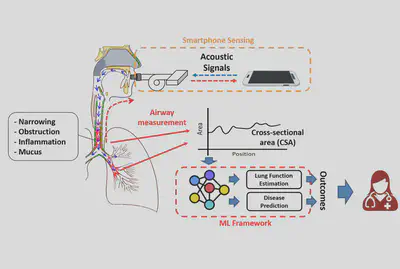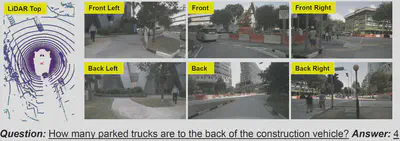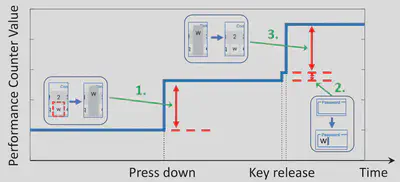Published Dataset
Famous-Figures-25 (FF25)
June 2024
Our FF25 dataset contains 8,703 portrait images of 25 public figures and the corresponding text descriptions. All the images were crawled from publicly available sources on the Web. These 25 subjects include politicians, movie stars, writers, athletes and businessmen, with diverse genders, races, and career domains. As shown in Figure 11, the dataset contains 400-1,300 images of each subject.

Each raw image is then center-cropped to a resolution of 512×512. For each image, we use a pre-trained BLIP2 image captioning model to generate the corresponding text description, and prompt BLIP2 with the input of “a photo of <person_name> which shows” to avoid hallucination.
The file structure is as follows:
test/<person_name>/img_<img_number>.pngtest/metadata.csvtrain/<person_name>/img_<img_number>.pngtrain/metadata.csv
For details, please refer to our related source code repository and paper.
- You may download the dataset from our dataset homepage.
- The source code related to using the dataset can be found from our GitHub repository.
- Our FreezeAsGuard paper makes use of the FF25 dataset.
Acoustic Waveform Respiratory Evaluation (AWARE)
January 2024
The Acoustic Waveform Respiratory Evaluation (AWARE) dataset consists of a group of human airway measurements, produced by our integrated AI and sensing systems for smart pulmonary telemedicine.
This dataset contains airway measurements of 382 human subjects, including patients with various pulmonary diseases and healthy control subjects, recruited from the Children’s Hospital of Pittsburgh during the past 3 years. The contents of the dataset include raw WAV files from acoustic sensing, segmented and aligned acoustic signal pulses, and processed measurements of airway cross-sectional areas.

- Visit AWARE dataset homepage for more information.
- The source code related to using the dataset can be found from our GitHub repository.
- Our PTEase paper makes use of the AWARE dataset.
To our best knowledge, this is the first public dataset of human airway measurements with pulmonary diseases, and we welcome any feedback from the smart health research community.
NuScenes-QA-mini Dataset
January 2024
This dataset is used for multimodal question-answering tasks in autonomous driving scenarios. We created this dataset based on nuScenes-QA dataset for evaluation in our paper Modality Plug-and-Play: Elastic Modality Adaptation in Multimodal LLMs for Embodied AI. The dataset is stored on HuggingFace.
Detailed Description
This dataset is built on the nuScenes mini-split, where we obtain the QA pairs from the original nuScenes-QA dataset. Each data sample contains 6-view RGB camera captures, a 5D LiDAR point cloud, and a corresponding text QA pair. The data in the nuScenes-QA dataset is collected from driving scenes in cities of Boston and Singapore with diverse locations, time, and weather conditions.
Dataset Components
The samples are divided into day and night scenes:
| Scene | # train samples | # validation samples |
|---|---|---|
| day | 2,229 | 2,229 |
| night | 659 | 659 |
Each sample contains:
- Original token id in nuscenes database.
- RGB images from 6 views (front, front left, front right, back, back left, back right).
- 5D LiDAR point cloud (distance, intensity, X, Y, and Z axes).
- Question-answer pairs.
In this dataset, the questions are generally difficult, and may require multiple hops of reasoning over the RGB and LiDAR data. For example, to answer the sample question in the above figure, the ML model needs to first identify in which direction the “construction vehicle” appears, and then counts the number of “parked trucks” in that direction. In our evaluations, we further cast the question-answering (QA) as an open-ended text generation task. This is more challenging than the evaluation setup in the original nuScenes-QA paper, where an answer set is predefined and the QA task is a classification task over this predefined answer set.
In most RGB images in the nuScenes dataset, as shown in the above figure - Left, the lighting conditions in night scenes are still abundant (e.g., with street lights), and we hence further reduce the brightness of RGB captures in night scenes by 80% and apply Gaussian blur with a radius of 7, as shown in the above figure - Right. By applying such preprocessing to the RGB views in night scenes, we obtain the training and validation splits of night scenes with 659 samples for each split. On the other hand, the RGB views in daytime scenes remain as the origin. The day split contains 2,229 for training and 2,229 for validation respectively.
How to use
With internet connection, you may load this dataset directly using HuggingFace Datasets library:
from datasets import load_dataset
# load train split in day scene
day_train = load_dataset("KevinNotSmile/nuscenes-qa-mini", "day", split="train")
External Resources
- You may find more details on our dataset homepage.
- The source code of generating the dataset can be found in our GitHub repository.
- Our Modality Plug-and-Play paper utilizes this dataset.
Android GPU Performance Counter to Key Press Dataset
December 2023
This dataset comes from our mobile GPU-based eavesdropping work, Eavesdropping user credentials via GPU side channels on smartphones, presented at the 27th ACM International Conference on Architectural Support for Programming Languages and Operating Systems (ASPLOS 2022). It contains 3,466 traces of mapping between the on-screen keyboard key presses and corresponding Snapdragon Adreno GPU performance counter changes collected on device in the meantime.
Dataset Structure
The dataset is arranged in the following format:
- Folder name (e.g.,
1622457056): This UNIX timestamp when the experiment took place.timestamp_data.csv: Raw recording of GPU performance counter changes during the experiment.- Column 1: UNIX timestamp of each performance counter value change event, with granularity of 1 microseconds.
- Column 2-13: GPU PC value changes of different types:
PERF_LRZ_VISIBLE_PRIM_AFTER_LRZPERF_LRZ_FULL_8X8_TILESPERF_LRZ_PARTIAL_8X8_TILESPERF_LRZ_VISIBLE_PIXEL_AFTER_LRZPERF_RAS_SUPERTILE_ACTIVE_CYCLESPERF_RAS_SUPER_TILESPERF_RAS_8X4_TILESPERF_RAS_FULLY_COVERED_8X4_TILESPERF_VPC_PC_PRIMITIVESPERF_VPC_SP_COMPONENTSPERF_VPC_LRZ_ASSIGN_PRIMITIVESPERF_VPC_SP_LM_COMPONENTS
timestamp_keys.csv: Keyboard key presses occurred during the experiment.- Column 1: UNIX timestamp of each key press, with granularity of 1 microseconds.
- Column 2: The specific key press occurred.
For the discussion of detailed meanings of different GPU PCs, please refer to Section 4 of our paper.
External Resources
- You may find more details on our dataset homepage.
- Our Mobile GPU Eavesdropping paper provides more information on the background and information leakage based on GPU PCs.
